[PConline Culture] A range hood is an essential kitchen appliance that efficiently removes harmful pollutants and cooking fumes generated from the stove. While air volume has traditionally been the main factor people consider when choosing a hood, it's not the only one. With the implementation of the new national standards for range hoods, several key factors now play a crucial role in determining the quality and performance of a range hood. These include air volume, wind pressure, noise levels, odor removal efficiency, and grease separation. In this article, we'll break down each of these five criteria to help you make a more informed decision when selecting the right range hood for your kitchen.

The primary function of a range hood is to quickly extract cooking smoke and oil vapors from the air. The faster the suction speed, the better the performance, as it reduces exposure to harmful fumes. However, the actual suction power depends on various factors, including the design, motor strength, and most importantly, the air volume and wind pressure. Air volume has long been the go-to metric for consumers, as it’s easy to understand and was heavily advertised by manufacturers in the past. This led many to believe that higher air volume always means better performance. But this isn’t necessarily true.

While air volume is important, it often comes at the cost of increased noise. Modern range hoods with high air volume can generate louder operation sounds, which may be uncomfortable for users. According to current national standards, the maximum allowable noise level for a range hood is 59dB. Most products on the market today operate just below that limit, around 58dB. However, increasing air volume typically leads to higher noise, so it's essential to check how well a model manages sound. After all, no one wants to cook in a noisy environment while dealing with smoke.

Wind pressure is another critical factor, especially in homes with longer exhaust ducts or those located far from public vents. The new national standard requires a minimum wind pressure of 80Pa, but for optimal performance, especially in multi-story buildings, it's advisable to choose a hood with wind pressure above 300Pa. Higher wind pressure ensures that smoke is effectively expelled without being drawn back into the kitchen. This is particularly important in tightly sealed modern kitchens where airflow is limited.
Odor removal and grease separation are also key performance indicators. Odor removal refers to how effectively the hood clears smoke from the air, with the national standard requiring at least 90% efficiency within 30 minutes and over 50% within three minutes. Grease separation measures the hood’s ability to capture oil particles, which is crucial for maintaining a clean kitchen and reducing environmental impact. The national requirement here is a minimum of 80% grease separation.
In conclusion, simply relying on air volume when choosing a range hood is not enough. A well-rounded selection should take into account all five key factors: air volume, wind pressure, noise, odor removal, and grease separation. By considering these aspects together, you can find a range hood that not only performs well but also enhances your overall cooking experience. Always look for a product that balances functionality with user comfort, ensuring both health and environmental benefits.
Mine power supply, mining machine power supply, crypto mining PSU, high-efficiency power supply, mining rig power unit, 80 Plus Gold PSU, reliable mining PSU, cryptocurrency mining hardware, best mining PSU UK, US mining power supply, AU crypto PSU
Boluo Xurong Electronics Co., Ltd. , https://www.greenleaf-pc.com
